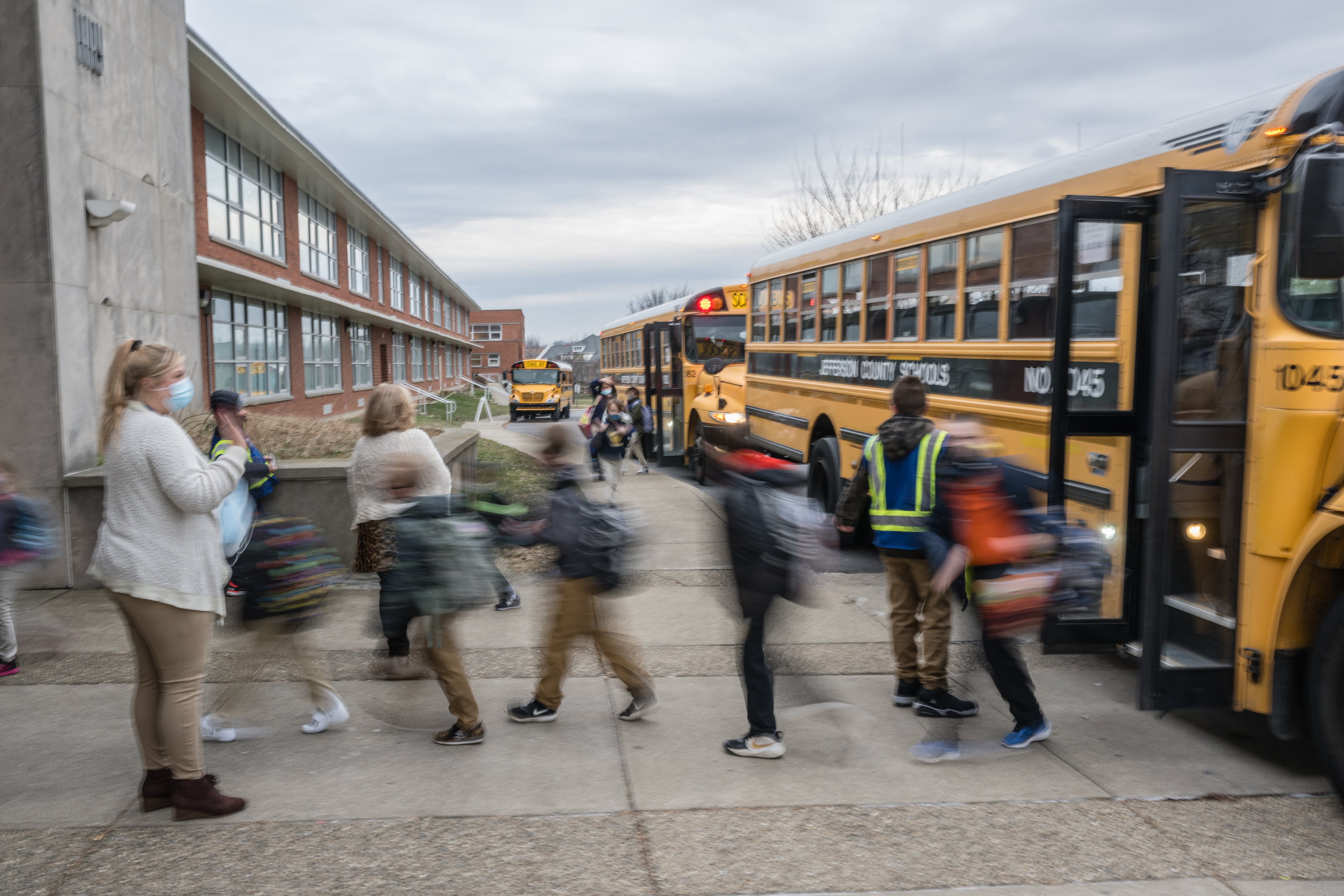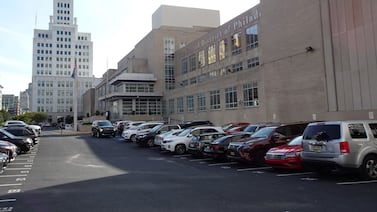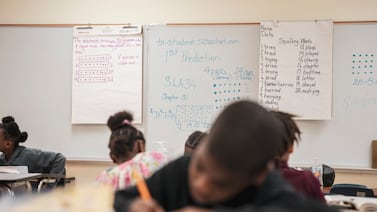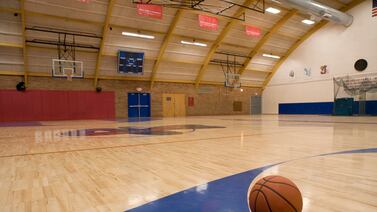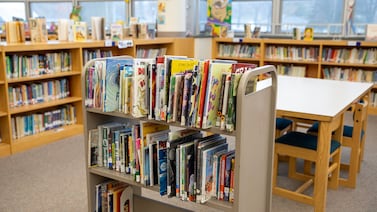About 1 in 3 school leaders noticed an uptick in student fights or physical attacks this past school year that they believed were brought on by the pandemic and its lingering effects, new federal data show.
In addition, more than half of school leaders reported an increase in classroom disruptions from student misconduct for the same reason.
The data, gathered in May from surveys of nearly 850 public school leaders, mostly principals, is evidence that many schools did see tensions rise this past year as students nationwide returned to fully in-person learning. For many educators, the behavior challenges were a defining feature of the school year — and complicated efforts to rebuild school communities and get students back on track academically.
Still, the responses were decidedly mixed. A sizable share of principals reported no change in these types of behavior. About 4 in 10 school leaders said the number of student fights remained about the same as in a typical year prior to the pandemic, while just under a third of school leaders saw about the same levels of classroom disruptions.
Educators say that some upticks were to be expected, as many students were dealing with heightened stress, isolation, and mental health needs this past year. Grief still permeates many students’ lives, too: An estimated 200,000 children and teens in the U.S. have lost a parent or caregiver to COVID since the pandemic began.
“We knew kids were going to be carrying just ridiculous amounts of stress and trauma,” said Katy DeFerrari, the assistant superintendent of climate and culture for Jefferson County schools in Kentucky. “I don’t necessarily think that it was all manifesting in acting out in the classroom or aggressive behaviors. Kids were just generally trying to adjust back to school. I think they did that better than everyone thought they were going to do.”
The new national survey results are bolstered by behavior and discipline data obtained by Chalkbeat from 19 of the nation’s 30 largest school districts through open records requests and a review of publicly available documents.
The district data diverges, too. Several large districts reported an increase in student fights this past year, though the size varied from a significant spike to a small uptick.
Duval County schools in Florida, for example, reported a 47% increase in infractions for fighting compared with the 2018-19 school year — the last that was unaffected by the pandemic. In North Carolina, Charlotte-Mecklenburg schools saw student fights increase by 26% over the same time period. In Texas’ Northside school district, fights were up by 20%. In Florida’s Hillsborough County and Polk County, student fights increased by 17% this past year, compared with the year before the pandemic. (In Polk County’s case, that was with a month of school still to go.) Meanwhile, DeKalb County schools in Georgia saw about a 7% increase in fights over that same time.
But other districts saw fewer student fights. As of late April, Dallas and Houston schools had each seen a sharp 62% decline in fights compared with the 2018-19 school year. With two months of school left, student fights were down by more than half in Texas’ Cypress-Fairbanks school district over that same period. And student fights were down 42% over that time in Jefferson County, Kentucky, with a month of school to go.
In New York City, the nation’s largest school district, student altercations and fights were down 27% compared with the 2018-19 school year, with a month of school to go, officials said. Still, some schools struggled.
Robert Effinger, who teaches 10th grade history at a Bronx high school, said his school saw an increase in physical and verbal fights, though physical confrontations became less frequent as the year progressed. He thinks much of the early conflict stemmed from students trying to establish their place and social circles at the school after they were apart for so long.
In his eyes, a rise in students cutting class or arriving late was an even bigger issue. And there were other disruptions, too, like students yelling across a classroom. A big driver of that behavior, Effinger said, is that some students were struggling with their work.
“They don’t want to embarrass themselves, so they’ll act out,” he said. “That’s happened a decent amount this year.”
And though his school added a counselor this year, students often went without the mental health help they needed. “I referred a few students to counseling and there are no counseling slots,” Effinger said. “It’s like, what do we do?”
Ashley Lourenco, a rising 10th grader, estimated there were five fights this past year at her magnet high school in Newark, New Jersey, where altercations are typically rare. There was only one the prior year that she could recall. She also noticed students made jokes on social media that could be interpreted as threats, and her classmates seemed more on edge when they returned from remote learning.
“People are super stressed,” she said. “Mental health is a pretty prevalent issue among people I know.”
More comprehensive national data released last week shows that schools grew safer in many ways in the decade before the pandemic’s arrival, with students experiencing fewer incidents of crime and violence — except school shootings — between 2009 and 2019. Those figures fell further in 2020 as many students learned from home.
As some schools saw fights and disorder rise again this past year, they responded in different ways.
Some turned to removing students from school more frequently. Out-of-school suspensions in Northside schools were up by 15% this past school year, compared with the 2018-19 school year. Over the same period, out-of-school suspensions rose by 9% in Hillsborough County.
Elsewhere, suspensions fell despite an uptick in student misbehavior. Duval County, for example, issued 500 fewer suspensions this past school year compared with the 2018-19 school year, a drop of about 2%.
Suspensions were falling nationwide well before the pandemic began, as states and districts passed policies limiting their usage. Research has shown that Black students, especially, are disproportionately suspended from school, and that suspensions can lower students’ test scores and reduce their chances of graduating.
As an alternative, many schools turned to less punitive forms of discipline, such as having students talk out conflicts or attend counseling. Those strategies have been tested during the pandemic and educators in some places have called for a return to more punitive forms of discipline.
Still, many districts continue to adhere to those practices.
DeFerrari, the Jefferson County official, said her district placed a greater emphasis this past year on making sure schools weren’t using suspension as a punishment when student misbehavior stemmed from trauma or because an adult had contributed to the situation with their own reaction.
The district also hired more behavior analysts who can be dispatched to schools to help figure out what’s causing a student to act out. The team grew from three to 10 last year, and will number 16 in the coming school year.
The district’s suspension rate dipped, and as of late April, officials had given out just under 15,000 suspensions, compared with just over 20,000 during the 2018-19 school year.
It’s about “really helping schools and administrators understand kids are not going to be able to interact with you if they are upset until they’re calmed down and de-escalated,” DeFerrari said. “If you can eliminate those small headaches — that is what gets people into trouble — then you eliminate problems.”
Kalyn Belsha is a national education reporter based in Chicago. Contact her at kbelsha@chalkbeat.org.
Alex Zimmerman, Patrick Wall, and Matt Barnum contributed reporting.

